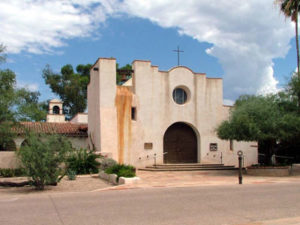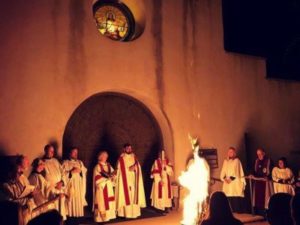“Sacred Worship, Sacred Work”
Saint Philip’s in the Hills Episcopal Church
Tucson, AZ
By Deborah Jodrey
 According to the Merriam-Webster dictionary, a “chimera” is a mythological Greek monster with a lion’s head, a goat’s body, and a serpent’s tail. I immediately looked up an illustration to get a fuller understanding of Father Robert’s response to the question, “If your congregation was an animal, what would it be and why?” Fr. Robert, a White man in his forties with so much energy and excitement for his parish, shared that he thinks of a chimera because Saint Philip’s is always changing with something different or new happening. The congregation has so much to offer folks whether they are interested in music, missions, or the liturgical aspects of Episcopal life. “If you look at it from different angles, you see something different, right? So anybody can look at it from a different angle and say, oh, this is what that church is about.” Fr. Robert explains that while at times the complexity of Saint Philip’s identity can be frustrating, he has actually come to embrace it and sees his parish as “a community of communities – each who are passionate about something.” Fr. Robert sees his role as the Rector as one of striving to “nurture each of those communities and keep them moving ahead and doing their thing.”
According to the Merriam-Webster dictionary, a “chimera” is a mythological Greek monster with a lion’s head, a goat’s body, and a serpent’s tail. I immediately looked up an illustration to get a fuller understanding of Father Robert’s response to the question, “If your congregation was an animal, what would it be and why?” Fr. Robert, a White man in his forties with so much energy and excitement for his parish, shared that he thinks of a chimera because Saint Philip’s is always changing with something different or new happening. The congregation has so much to offer folks whether they are interested in music, missions, or the liturgical aspects of Episcopal life. “If you look at it from different angles, you see something different, right? So anybody can look at it from a different angle and say, oh, this is what that church is about.” Fr. Robert explains that while at times the complexity of Saint Philip’s identity can be frustrating, he has actually come to embrace it and sees his parish as “a community of communities – each who are passionate about something.” Fr. Robert sees his role as the Rector as one of striving to “nurture each of those communities and keep them moving ahead and doing their thing.”
The congregation mirrors this commitment beyond the walls of Saint Philip’s, reflecting it in the way they perceive the needs of the communities around them and also in the ways in which they are striving as a church to meet those needs. At the front of their sanctuary is a large and beautiful picture window looking out on the stunning landscape around their building. Comparing this window and their parish to other famous churches, Fr. Robert explained how you walk into churches like Saint John the Divine or the National Cathedral and they have these “glorious big stone carved images . . . [and] what you’re looking at is this fixed ideal that someone has carved, trying to portray their imagination of what’s perfect.” He continued:
[But] when you look out the window at Saint Philip’s, you’re looking at an ever-changing, dynamic world. You’re faced with the reality of the world every single Sunday through that window. I think that part of [the world’s] changing landscape is part of the identity of the [church]—that we’re always there to meet the needs of a changing world in a way that I think a lot of places aren’t prepared to do. . . It’s a dynamic place and part of this [is] because people are always moving to Tucson or moving away . . . [and] for me, that’s one of the great things about the place, that there’s that dynamic engagement with the world that has been a kind of constant ever since our beginning.”
Fr. Robert’s reflections on the church invite questions. How is Saint Philip’s able to embrace who they are both within and beyond the walls of their parish as a community of communities? How do they balance the aspects of their monastic and missional identities? Are they connected or separated? How can something like the chimera, something different and new at each angle, be a metaphor for the congregation? How do they face the challenge of both the beauty and brokenness outside that picture window, and also, perhaps, the beauty and brokenness within their own walls?
Located in Tucson, Arizona, Saint Philip’s in the Hills Episcopal Church is known for their extensive outreach and music programs. With 2500-3000 members, the congregation is also the largest Episcopal church in Arizona. Founded in 1936, they have helped establish a number of other Episcopal congregations and organizations and partnered with many others. Fr. Robert explains that John and Helen Murphy, the founding couple, “sort of owned half of Tucson.” Initially their goal was to “create this little tiny chapel that would become a kind of visible gateway to their foothills estates.”
However, those plans changed when they ran into a priest, George Ferguson, who ended up being both the first priest of Saint Philip’s and the man who convinced the couple to take the work of establishing a congregation more seriously and build an actual church. According to Fr. Robert, “[Fr. Ferguson] sat down with John and Helen Murphy, and he said, ‘What I want to do is I want to build this big picture window.” Fr. Ferguson marked the outline of where the church would be and then he put two chairs there said, “Now, John, on a Sunday morning, there’ll be this glorious window for people to look out. And during my sermons, when they are bored to death, they’ll be trying to decide which piece of your land they want to buy and build a house on.” The plan worked, and the couple paid for the window and the church.
Despite what Fr. Robert describes as “a sort of mercantile and mercenary beginning,” by 1956 Saint Philip’s had flourished. The congregation was known for founding schools, hospitals, elderly care facilities, and so much more. All things for which the congregation is still well-known. With this historical backdrop and this vivid image of the chimera, I wonder if the church’s ecclesial imagination is best demonstrated by Saint Philip’s ability to balance opportunities for folks to get involved. There are so many ways to engage the work of the church and plenty of space to bring one’s full self to the table. The congregation demonstrates an appreciation of both the beauty and holiness of their community but also strives to respond to the hurt and pain present within it with empathy and justice. One of their greatest challenges is finding ways to recognize and care for both the brokenness and beauty of those inside the walls of Saint Philip’s and beyond the picture window.
Several themes can be identified within Saint Philip’s ecclesial imagination. The first is their dynamic engagement. You don’t have to look far to see this in action. The congregation is known for their strong music program, their dedication to children’s ministry, their focus on missions, and their commitment to the more traditional aspects of Episcopal life. In my initial conversation with Mother Taylor, the Curate for Outreach, she gave a thorough rundown of all that Saint Philip’s has been able to offer their community – even during a pandemic. The congregation has offered Sunday worship, education offerings, a weekly Mosaic Dinner Night, an antiracism group, monthly drives, and (more recently) performances by the parish’s choir thanks to new computer software. The website also provides the community with rich and helpful resources.
One key area of dynamic engagement is the music program. I am not usually drawn to more traditional hymns and songs, and wasn’t even familiar with a lot of the songs, but there was something about just sitting peacefully at my desk and listening to the incredibly talented choir that brought me so much peace and joy. It wasn’t the lyrics of the song, but the peace and calm that I felt – a rare thing in my online worship experiences. The high quality, professional level of music, the incredible gifts of the singers, and the skill of the worship team that assembled the music in such a creative way just blew me away. My experience clearly wasn’t unique – many congregants shared that the music program is what initially drew them to the parish. Herb, an older white man in his eighties and the church treasurer, explained that he and his wife were specifically looking for a church with “a really good music program,” and that’s how they “ended up at Saint Philip’s.” Another congregant shared a very similar sentiment, stating that for her and her husband, “it was the music program that definitely drew us to the church.”
While Saint Philip’s might be best known for their music program, it is clear that the same level of commitment exists in all areas of ministry and extends to all ages. I had the opportunity to attend a Sunday Children’s Worship and Formation event called “Comfy Space.” It was led by Fr. Mark Shultz, a younger man serving as the Curate for Children, Youth, and Family Ministries. The worship event was a live service geared toward the kids in the congregation which retained many, if not all, the elements of a usual Episcopal service. There were many interactive portions: one kid read scripture and other kids shared pictures, prayers, and (during the passing of the peace) virtual hugs and heart hands. This space was created for to give kids the freedom to move around more during the service and for their movements and noises to contribute to the worship rather than detract from it. Fr. Mark was wonderful and clearly has a great relationship with the kids and families in the congregation.
The presence of dynamic engagement can also be witnessed in Saint Philip’s dedication to being a “teaching parish.” Despite the shrinking number of curate positions, the congregation remains dedicated to offering three of these entry-level positions so that young priests have the opportunity to learn and grow into their call. The parish is also home to the “College of Clergy” – a group of 18 retired clergy who, along with the five clergy on staff, resource “Beloved in the Desert,” a ministry which will be discussed below. In this “pool of wisdom,” you can find clergy who, as Fr. Robert put it, “[are] longing to share what they’ve learned and to help people walk through their own faith journeys.”
These are just a few examples of the types of programming that Saint Philip’s has been able to offer even in the midst of COVID-19. The same level of dynamic engagement also extends to their missional focus and their commitment to getting parishioners involved in serving the community, whether through non-profits, participation in their Beloved in the Desert ministry, monthly drives, or other opportunities the parish encounters. According to Fr. Robert, one of the best of these was the chance “to forgive the medical dept of 1700 households in Pima county.”
 The second theme indicative of Saint Philip’s ecclesial imagination is a commitment to sacred service. This is reflected not just in their ability to have a lot of programs, but Saint Philip’s ability to develop and implement programs driven with a purpose—the ability to look out the picture window and see not only needs, but their own ability to meet them. One clear example of this sacred service is Mosaic Community Night. On the night I attended, the Zoom event had eighteen participants with a mix of ages, a small amount of gender diversity (mostly women), and one person of color. The evening began with prayer and, despite not really being able to follow along, I found it was a lovely way to center myself a bit after a busy day. After the evening prayer, the group jumped into their book discussion. Tonight was week four, and the topic was patience. Over the course of the evening, there was a lot of vulnerability, some intensity, a sense of people freely being able to share, solidarity and care for each other, and a strong sense that people are missing each other and struggling in the midst of this global pandemic. This group of incredible folks was not shy in showing the raw emotions they were feeling as they shared and responded to others sharing. It was impossible for me not to notice the strong sense of vulnerability and solidarity in a majority of things that were shared that night. There were only a few rare moments where I wondered if in an attempt to understand and show solidarity, a comment could have felt dismissive, especially a comment that was made to the only person of color in the room about how “we all have our stuff,” without an acknowledgement to the extra stuff that comes with being a person of color, especially in such a White space. Despite this one comment, the space that was made for vulnerability and the desire to care and show empathy were overwhelming. Overall, I was blown away with this event and this group that was so willing to just share with one another and care for each other.
The second theme indicative of Saint Philip’s ecclesial imagination is a commitment to sacred service. This is reflected not just in their ability to have a lot of programs, but Saint Philip’s ability to develop and implement programs driven with a purpose—the ability to look out the picture window and see not only needs, but their own ability to meet them. One clear example of this sacred service is Mosaic Community Night. On the night I attended, the Zoom event had eighteen participants with a mix of ages, a small amount of gender diversity (mostly women), and one person of color. The evening began with prayer and, despite not really being able to follow along, I found it was a lovely way to center myself a bit after a busy day. After the evening prayer, the group jumped into their book discussion. Tonight was week four, and the topic was patience. Over the course of the evening, there was a lot of vulnerability, some intensity, a sense of people freely being able to share, solidarity and care for each other, and a strong sense that people are missing each other and struggling in the midst of this global pandemic. This group of incredible folks was not shy in showing the raw emotions they were feeling as they shared and responded to others sharing. It was impossible for me not to notice the strong sense of vulnerability and solidarity in a majority of things that were shared that night. There were only a few rare moments where I wondered if in an attempt to understand and show solidarity, a comment could have felt dismissive, especially a comment that was made to the only person of color in the room about how “we all have our stuff,” without an acknowledgement to the extra stuff that comes with being a person of color, especially in such a White space. Despite this one comment, the space that was made for vulnerability and the desire to care and show empathy were overwhelming. Overall, I was blown away with this event and this group that was so willing to just share with one another and care for each other.
I also see a sacredness and commitment to serving those beyond the congregation at Saint Philip’s. In my interview with Mary Margaret, a young woman with long dark hair, and a vestry member, she shared more about the parish’s decision to give money in order to forgive medical depts. From the outside looking in, one might assume that this was an act of a wealthy church with excess money to give away. But in my conversation with Mary Margaret, I learned that this came from a sacred commitment to social justice and a sincere desire to help the community. She went on to explain that it was in the midst of a money collection effort at the church where the money could have been very useful to meeting needs within the parish, but instead of using the money on the parish, Mary Margaret shared:
Instead, we collected that money and voted to give it away, and we gave it to a charity that helps pay off people’s medical debt, . . . and I think that’s what captures what this church is. People expect us to kind of be inwardly looking and, you know, have more money than we know what to do with. But we don’t. We dig deep and then we turn around and give it back to the community.
I can’t help but see here such clear and sacred purpose behind the dynamic engagement of this parish.
Another example that Fr. Robert shared with me is their Beloved in the Desert ministry. He told me that their commitment to justice and building relationships with those in their community is one of the main reasons they started Beloved in the Desert, their young adult intentional community focused on justice. As their website puts it, “Beloved in the Desert is made up of young adults between the ages of 21 and 29. As a volunteer with Beloved in the Desert, one joins a nationwide network known as the Episcopal Service Corps. The Corps members serve in local non-profits working to end homelessness, hunger, and poverty in Tucson, live together in intentional community, and pray together and with the community in Southern Arizona.” Fr. Robert went on to explain,
Well, what I really wanted, and this is part of what I think Beloved in the Desert is about, is that sort of relational experience, so that what you develop is not charity, but empathy—what you develop is the capacity to walk in compassion, sharing the suffering of folks who are in that situation. Not because you feel bad for them, but because you have a depth of relationship and a recognition of your shared humanity that makes it so [that] when they suffer, you do too. And so, for me, that’s why these programs are so important: because it really is about being at the foot of the cross with people, not just sort of seeing it from afar. I think part of what we have to do if we’re going to be a church that genuinely can respond to the needs of the world is actually be in deep relationship with people who are facing those needs daily. For me, that [means] not only [creating] programming around justice, but actually . . . creating Beloved in the Desert so that we could begin to engage in that very real day-to-day experience of people in a way that many of our folks don’t face at all.
In conjunction with the justice work and sacred service that is taking place in the Beloved in the Desert ministry, Fr. Robert also shared more about the work their antiracism group has done and is hoping to do. The goal of this group (which consists of approximately thirty parishioners) is to “figure out what the action step is.” In response to the dynamic engagement this group has done in the books they have read and the personal work they have done, the group must now put what they have read and said into action. Fr. Robert explained that they are hoping to start two different programs: “One would be a lending program for minority-owned businesses. Another would be a credit union that’s an alternative to payday lending in Southern Arizona.” To some, these programs may not seem like that big of a deal, but according to Fr. Robert the purpose behind them is to answer the “justice question.” “Payday lending is a huge justice issue,” and individuals are often unaware of how predatory it is. “So, there are questions like that. If you change someone’s situation in such a way that when they cash their paycheck, they don’t give 17% away, that is a justice question.”
In response to the challenge presented by the many opportunities for dynamic engagement and sacred service both within and outside the walls of Saint Philip’s, the congregation and its leadership have worked hard to create balance. Their ability to do so derives from their willingness to embrace both vulnerability and action: creating spaces of worship conducive to connection and belonging while engaging in tangibly meeting the needs of their community. It is through this chimera, a community of communities, that they are able to offer so much to their congregants. St. Philip’s is a parish committed to looking through the picture window at the front of the sanctuary and meeting the needs visible through it. Even though you might see a different level of engagement depending upon the angle from which you view the chimera, at its core is a drive to serve with purpose, to be a parish that, according to their own mission statement, is “Sent to Serve.”
Saint Philip’s ecclesial imagination can be summarized in the words of Mary Margaret, “I think that the space, for whatever reason, feels pretty holy. The activities were also another big part of [what drew me to the church], and with the other members of the congregation there is a mindfulness and an intentionality that they bring to the events, so then when we’re all together it just feels like we’re doing really sacred work.” This is a clear picture of who Saint Philip’s is: committed to vulnerability, justice, and worship, with an ability to appreciate the beauty and holiness within their parish and a commitment to responding to the hurt and pain in the world beyond with justice and empathy.


